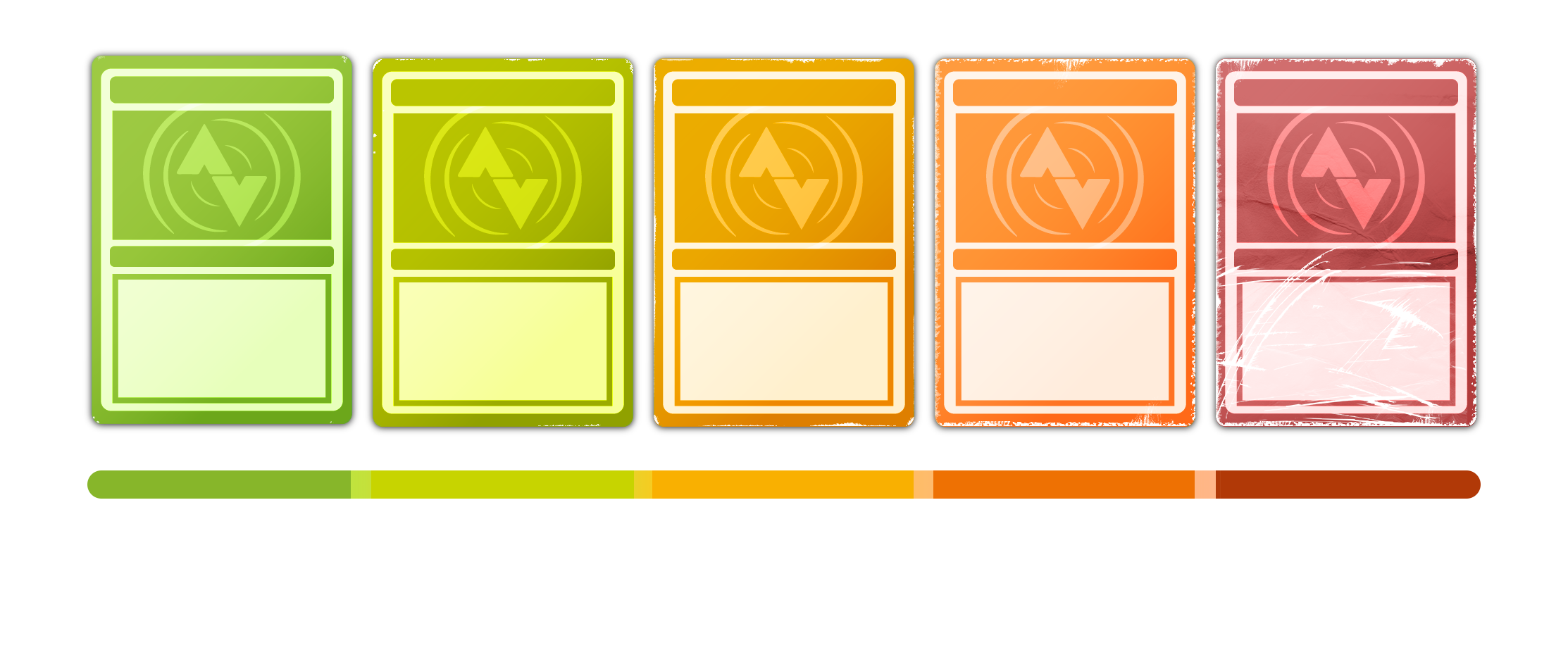

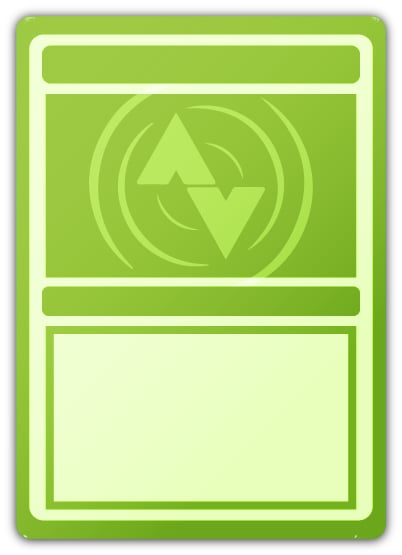
Minor imperfections, the card looks nearly unplayed with no major defects.
• Cards in Near Mint conditions show minimal wear of handling and can have a nearly unmarked surface, crisp corners and unblemished edges outside of a few slight flaws.
• A Near Mint card may have slight edge wear or a scratch or three, but overall looks nearly unplayed with no major defects.
• The acceptable range of cards within the Near Mint condition includes both cards with no imperfections and cards with a few slight imperfections.
NOTE: The definition of "MINT" indicates a level of condition that surpasses the current market standards. It represents a theoretical degree of perfection where the surface and corners are impeccable, the colors vibrant, and the centering perfectly distributed. For this reason, our system excludes this condition, as it is essentially a conceptual standard that is rarely achieved.
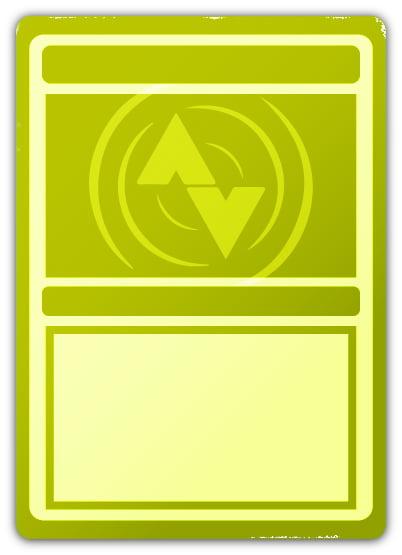
A few minor and noticeable imperfections but no major defects.
• Cards in Slightly Played (SP) conditions may have minor border or corner wear, scuffs or light scratches.
• Major defects such as grime, bends or issues with the structural integrity of the card are not present.
• Noticeable imperfections are okay, but none should be too severe or at too high a volume.The acceptable range of cards within the Slightly Played condition includes both cards with few or a handful of minor imperfections.
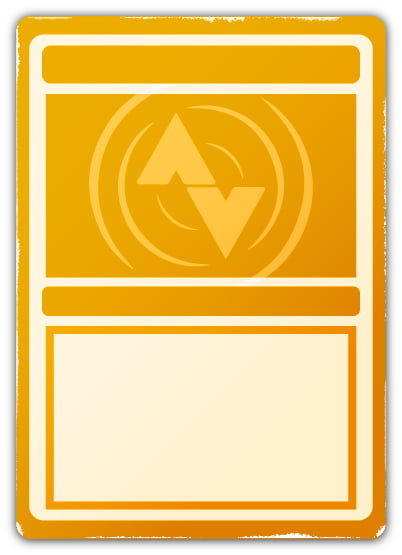
Different Imperfections, noticeable defects on small areas.
• Cards in Moderately Played (MP) conditions may present border wear, corner wear, scratching or scuffing, creases or whitening or any combination of moderate examples of these flaws.
• A Moderately Played card may have some form of imperfection impacting a small area of the card from mishandling or poor storage, such as creasing that doesn't affect card integrity, in combination with other issues such as scratches, scuffs or border/edge wear.
• A Moderately Played card has no structure damage, the overall look is still fine with no major structural damage.
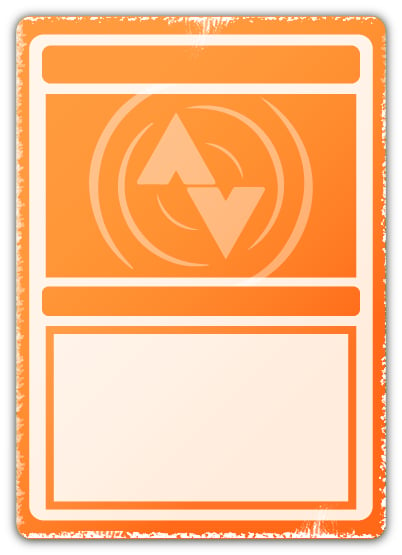
Major amount of damage, bad overall looking, but still playable.
• Cards in Played (PL) conditions show a major amount of wear.
• Cards can show a variety of moderate and major imperfections along with creasing, whitening and bends.
• Played cards can have flaws that impact the integrity of the card, but the card is still sleeve playable in tournaments.
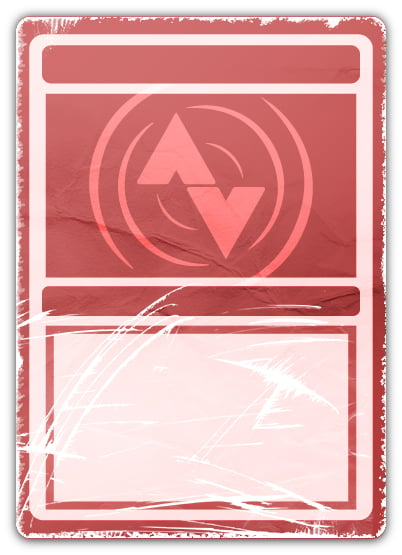
A Poor card shows major defects and might not be playable or tournament legal.
• Poor cards (PO) show wear or imperfections beyond the standards for other conditions.
• Cards in Poor condition can also exhibit imperfections or damage that may make the card illegal for tournament play, even in a sleeve, for example a major bend, noticeable through the plastic.
• Cards in Poor condition may have major border wear, corner wear, scratching or scuffing, as well as folds, creases, tears or other damage that impacts the structural integrity of the card.
ALTERATIONS
A card is considered altered when it's been altered as a means of personalizing the card in a way that has some artistic merit.
An altered card should only be offered with a scan. Any additional information is important, so be sure to point out whether it’s a full alteration, and who did it.
SCRATCHINGA scratch on the surface of the card. It can be light or severe due to the source that caused it. Foil are much more sensitive to scratches due to the glossy finish, and are often already scratched when opened: minor scratches on foil cards are not considered when evaluating their grading.
You have to be aware that card condition could impact a card being tournament-legal or not.
You’ll hear statements like “A Poor-graded card is not legal in a tournament” or “This full alter is totally fine, just buy it and put it into a sleeve”. Unfortunately there’s no “Poor equals not playable” or “Played equals being playable” thing.
Thus here are the main facts you need to know: the card is legal if not damaged or modified in a way that might make it recognizable.
Significantly creased cards can be distinguished from other cards in a deck, even sleeved. Also, altered cards may be thicker than the other cards in the deck, depending on the method used to alter them.
If any cards can be distinguished from the other cards in the deck without viewing its front face, then those cards are marked and not legal for tournament play.
If you are not sure about whether a card is going to cause a problem in a tournament, you should take the deck to the Head Judge to inspect it.
If you have any doubt about a card you are about to buy, you can contact us or the community: we are here to help!
Here’s the official link if you are interested in all details related to tournament legality.